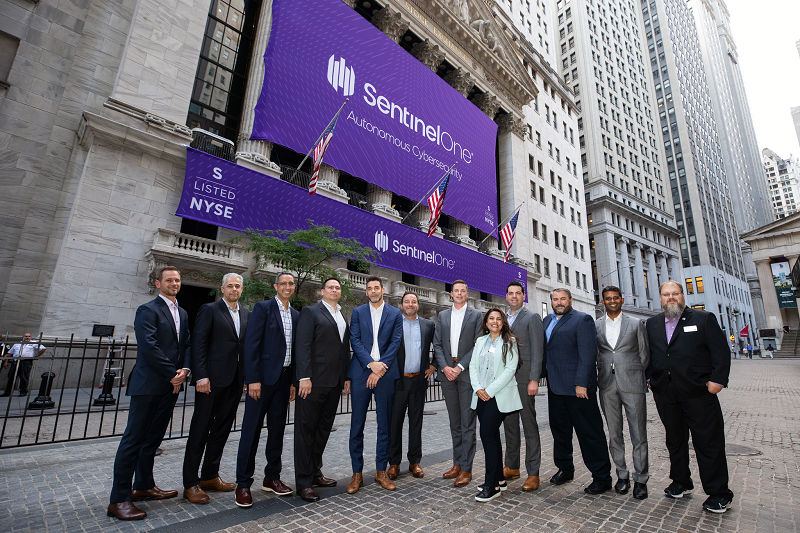To say that artificial intelligence is (once again) having a big money moment would be a gross understatement. That’s certainly been the story in the private markets, where venture capital has been hard to come by over the last year. Those startups serving up the AI flavor of the moment – generative AI in the form of some sort of semi-rational, semi-delusional chatbot that can return some pretty interesting results – are grabbing more than their fair share of available VC dollars. The firm behind the most famous chatbot of them all, OpenAI, got $10 billion from Microsoft in January. A chief rival, San Francisco-based Anthropic, has raised $1.5 billion in just two years, with half of that money coming in two rounds since February.

Cathie Wood, the oracle of Ark Invest, is certainly doing her part to push the narrative. In January, the asset management firm released its Big Ideas 2023 report. One of the biggest ideas from ARK Invest analysts is that AI could generate up to $14 trillion in revenue and $90 trillion in enterprise value in 2030. Thanks to recent (and anticipated future advancements), it will become cheaper and faster to train AI to generate text and images, write code, and enable autonomous driving, among other applications.

More recently, Wood has been on a talking-head tour, doing a number of video interviews about why her firm has been dumping shares in Nvidia (NVDA) while promoting other tech companies in her portfolio that have been floundering of late. Ostensibly, Wood is arguing that for every dollar of hardware Nvidia sells, software and software-as-a–service (SaaS) providers will generate $8. She also cited three examples of companies that will be big winners in the latest AI wave: UiPath (PATH), Twilio (TWLO), and Teladoc Health (TDOC).
How Could Generative AI Benefit Teladoc Stock
One can certainly see the value for UiPath to integrate AI functionality, particularly generative AI, into its robotic process automations (RPA) solutions. The logical next stop for these software bots, which take over many digital-based workflows, is to be able to interact seamlessly with users. The AI play for Twilio is also obvious, once you understand what the company actually does, which boils down to communication platform as a service (CPaaS). That includes things like chatbots and other communication tools that could be supercharged through generative AI language models.
Finally, there’s Teladoc (TDOC), a market leader in telehealth and virtual care that has amassed a “large and unique set of data points.” The bigger the data, the better the AI model, potentially putting Teladoc up against companies like Babylon Health and others deploying virtual healthcare assistants as frontline triage. More powerful AI models, leveraging Teladoc’s massive data, could also improve diagnostic and monitoring tools the company uses for its virtual care programs. And, of course, Teladoc could potentially license anonymized data for training third-party algorithms for different healthcare applications.

Shares have not been this cheap in more than six years, so is this an opportunity for investors to skate to where the generative AI puck will be?
Teladoc Stock Takes a Beating

When we did our last yearly checkup on Teladoc stock, revenues were on a nice upward trajectory but at a potentially high cost thanks to its $14 billion-ish acquisition of Livongo, a virtual care company that originally specialized in diabetes management. The offering has since expanded to include blood pressure and weight management support using smart devices and telehealth services.
Our worst fears came true. Teladoc took a massive loss ($13.7 billion) in 2022, almost all of it a goodwill impairment ($13.4 billion) associated with the Livongo acquisition. When Teladoc bought Livongo in 2020 in an all-stock deal that was originally valued at $18.5 billion at the time, what it mainly got for all that money was an intangible asset with perceived value – goodwill. The merger was seen as the creation of a healthtech juggernaut that Piper Sandler, an investment bank, valued at $37 billion back in August 2020. It turns out the intangible value was ephemeral, leaving Teladoc today with a total market cap of just $4 billion, despite revenues of more than $2.4 billion last year.

One of our other big complaints from last year still has not been addressed: the massive amount of money Teladoc is spending on marketing, advertising, and sales. In 2022, the company spent more than $850 million on selling itself, more than it cost to actually produce its products and services ($744 million). Meanwhile, debt has climbed from $1.2 billion in 2021 to more than $1.5 billion last year. The company is sitting on about $900 million in cash and other liquid assets. Based on a burn rate of $280 million per year (annualized from Q1-2023 results), Teladoc still has a few years to figure things out.
What is Teladoc’s Strategy?
Unfortunately, the strategy revealed to date is not exactly inspiring and appears to have little connection to the data moat that Teladoc has amassed. The company did reorganize how it tracks revenues, splitting its revenue streams between Integrated Care and BetterHelp. The former mainly represents B2B revenues associated with all of its virtual care programs for patients, while the latter is the B2C mental health service. The BetterHelp segment appears to be the better bet right now, growing more than 40% last year to $1 billion in revenue. (Teladoc acquired the online counseling program back in 2015 for just $4.5 million, so there was a time when the company made smart acquisitions.)

Here is a list of Teladoc’s growth strategy, as outlined in its 2022 10K, followed by our interpretive commentary:
- Enable A Virtual First Strategy for Consumer Healthcare Access. This is more of a mission statement than an actual strategy. It basically rehashes the company’s capabilities, scale, etc. One of only two places in the 137-page document where Teladoc mentions its machine-learning capabilities.
- Expand our Suite of Services to Address Unmet Needs. This is where Teladoc introduces its newest solutions. These include, among others:
- Primary360: Intended to be the primary entry point for all patients, emphasizing primary care that is connected to all of the company’s different services.
- Inpatient Connected Care: Basically remote monitoring of patients while in a hospital or clinic by turning the television in every patient room into a virtual care end-point by using specialized hardware, camera, microphone, software, and networking. Teladoc’s answer to staffing shortages.
- Increase Engagement and Long-term Relationships with Our Members by Driving Expanded Access & Enhanced Touch Points. A very long-winded way of saying that the company wants patients to interact more with its high-tech app.
- Expand Penetration of our Suite of Services Among Existing Clients. Kind of no-brainer, with little detail about how this will be accomplished,
- Leverage Existing Distribution Channels and Expand Penetration of Global Markets. Also, a no-brainer. International sales have accounted for about 13% of revenues the last couple of years, dropping from about 16% in 2020 when Teladoc acquired Livongo.
- Drive Direct-To-Consumer Channel Growth. This is the BetterHelp segment, which has been the source of growth. Here’s hoping for more anxiety and depression in the outyears.
The list seems pretty rote to us, including one more Teladoc strategy that probably deserves its own section.
Teladoc Investments and Acquisitions
Like any company, Teladoc’s growth strategy includes additional investments and acquisitions. The question is whether these future deals will be more like BetterHelp or Livongo. This finally brings us back to what Cathie Wood is preaching about AI and the title of this article. Frankly, as retail investors in the company, we’re concerned that Teladoc management is not being more forward-looking at what appears to be an inflection point. On one hand, you don’t want to overbuy into the hype (like what happened with Livongo). On the other hand, you don’t want to become the next Blockbuster by snubbing emerging technology that could help make or break your business.

Perhaps adding some generative AI capabilities to their platform might be in order – like one-year-old company Hippocratic AI. The startup out of Maryland just raised a $50 million Seed round last month from Andreessen Horowitz and General Catalyst to develop ChatGPT-like capabilities for healthcare. Co-founded by Munjal Shah, whose visual search company Like.com was acquired by Google back in 2010, Hippocratic AI is building a large language model (LLM) designed specifically for healthcare. The young company claims its efforts can already outperform GPT-4 (OpenAI’s latest LLM) and other existing state-of-the-art language models on 105 of 114 medical tests and certifications.

Like ChatGPT, Hippocratic AI is building its healthcare models using reinforcement learning with human feedback. This approach involves healthcare professionals helping guide and train a LLM by rating its responses. Some of the roles and tasks the company is exploring include patient navigator, dietician, genetic counselor, enrollment specialist, medication reminders, and more. The company is even developing and evaluating the AI’s bedside manner:

Remember when mRNA vaccines weren’t a thing and then “suddenly” they were a thing – but only after decades of research? It may seem like generative AI came out of nowhere, but the reality is that the technology is the culmination of decades of R&D, billions of dollars spent, unimaginable computing power, and ginormous datasets.
Conclusion
What does all this mean for Teladoc, which is predicting revenue growth of between 6% and 11% this year? That the company needs to regain the goodwill of investors by making bold but smart investments in technology that will position it to be a true leader in virtual care rather than the Zoom for healthcare. Until then, we wouldn’t consider adding shares of Teladoc even if we hadn’t already allocated the maximum amount of capital to our position.
Tech investing is extremely risky. Minimize your risk with our stock research, investment tools, and portfolios, and find out which tech stocks you should avoid. Become a Nanalyze Premium member and find out today!

















